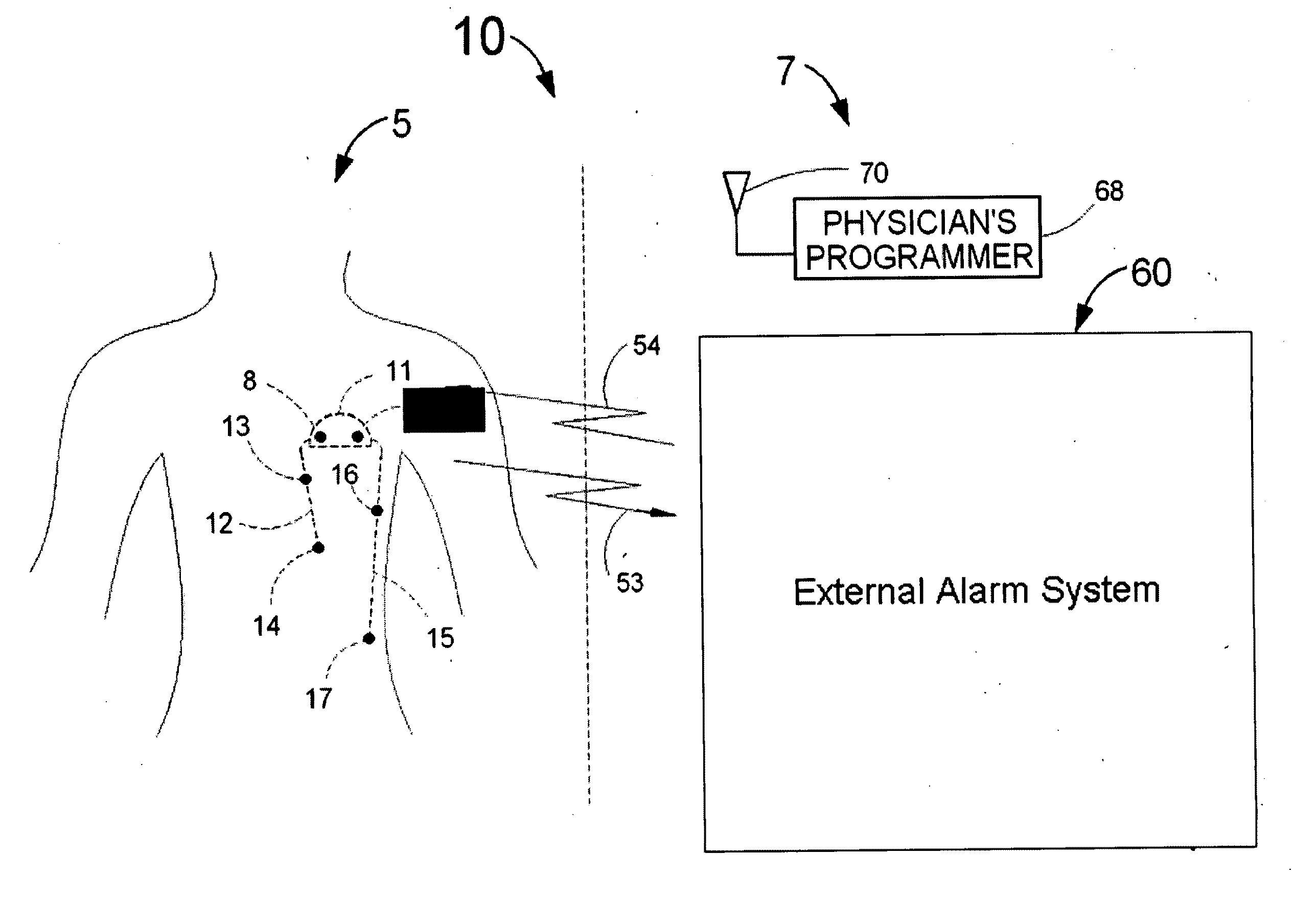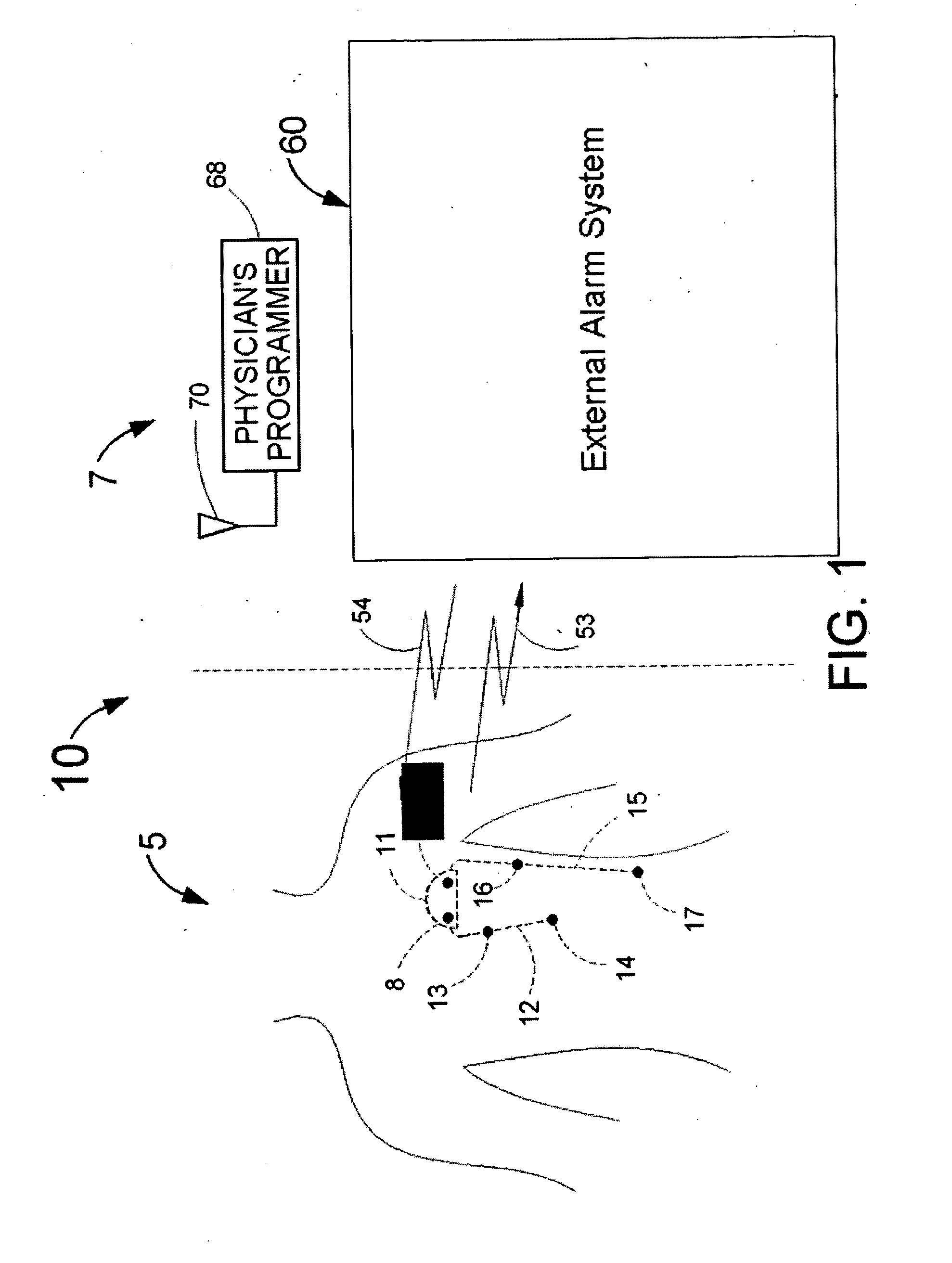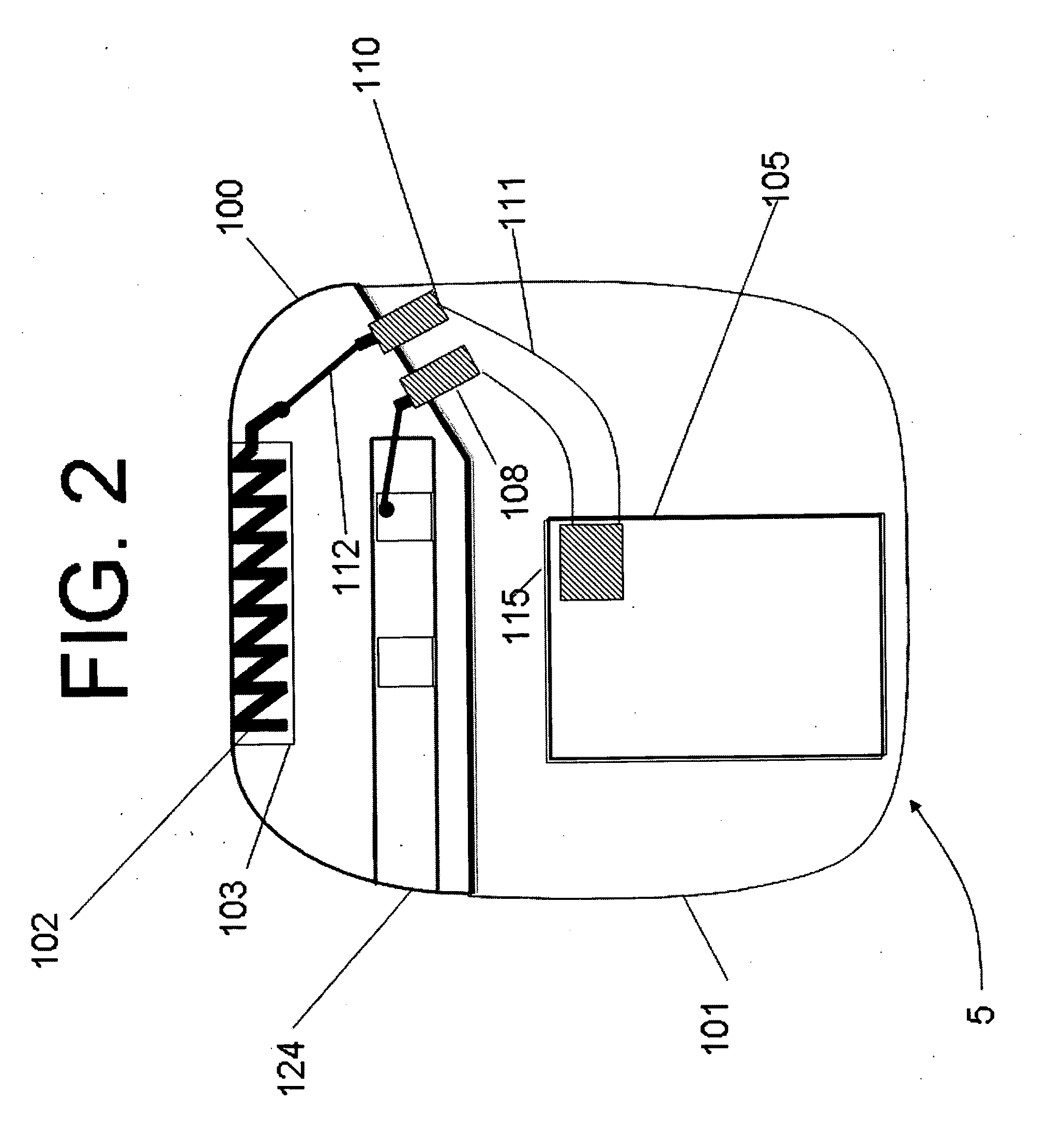Header with integral antenna for implantable medical devices
- Summary
- Abstract
- Description
- Claims
- Application Information
AI Technical Summary
Benefits of technology
Problems solved by technology
Method used
Image
Examples
Embodiment Construction
[0029]Various references will be made to cuboid components (e.g. a substrate) defined by a length, depth and height, having two major parallel surfaces (length×depth surfaces) that generally have a much greater surface area than the other four surfaces. For convenience, when referring to the orientation of the cuboid with respect to another surface, the cuboid will be treated as a surface, not a volume, defined by either of the two major parallel surfaces. Thus, for example, if a substrate is said to be mounted parallel to a container's surface, then either of the cuboid's two major surfaces are mounted parallel to the container's surface.
[0030]FIG. 1 illustrates one embodiment of a system 10 consisting of a patient side system 5 and external equipment 7. The patient side system includes an implanted medical device 11 that comprises a housing 101 (FIG. 2) that contains a transceiver (not shown) and electronic circuitry that can detect a cardiac event such as an acute myocardial infa...
PUM
 Login to View More
Login to View More Abstract
Description
Claims
Application Information
 Login to View More
Login to View More - R&D
- Intellectual Property
- Life Sciences
- Materials
- Tech Scout
- Unparalleled Data Quality
- Higher Quality Content
- 60% Fewer Hallucinations
Browse by: Latest US Patents, China's latest patents, Technical Efficacy Thesaurus, Application Domain, Technology Topic, Popular Technical Reports.
© 2025 PatSnap. All rights reserved.Legal|Privacy policy|Modern Slavery Act Transparency Statement|Sitemap|About US| Contact US: help@patsnap.com



